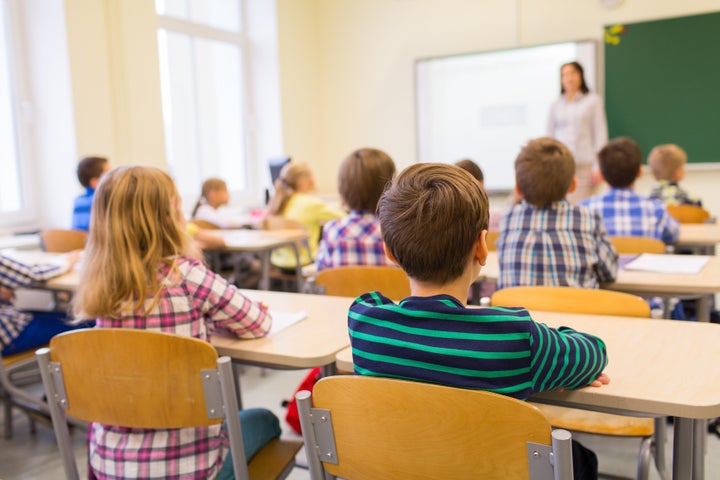
In a country where the earnings and lifestyles of the richest and poorest citizens are increasingly disparate, education researchers are offering up a rare piece of good news: Despite a societal backdrop of widening income inequality, kids on opposite ends of the wealth spectrum are now entering kindergarten with closer levels of achievement than in the past, new research finds.
Two new studies out Friday in a journal of the American Educational Research Association illuminate this issue. The first looks at school readiness measures for kindergarten students, and finds that low-income students are coming to school with skills that more closely match those of their high-income peers than in previous decades.
The second study looks at parental involvement in children’s lives, and offers a potential explanation for why the kindergarten readiness gap might be narrowing. It finds that across the board, parents are playing a more hands-on role in the educational experiences of their young children.
A co-author of both studies, Stanford University’s Sean Reardon, said the results are surprising, but welcomed. During the mid-1970s through mid-1990s, the academic achievement gap for poor and rich children entering school grew substantially. The new study shows this gap closing by 10 to 16 percent between 1998 and 2010.
“It’s rare in some ways that you do a study where you expect bad news because all the signals are pointing in that direction, and instead you find good news,” Reardon told The Huffington Post. “In my experience that doesn’t happen often enough. ... It does suggest since we’ve been able to move the gaps in the right direction a little bit, we ought to be able to figure out to keep moving them in the right direction.”
The first study analyzed a nationally representative data set on children’s reading, writing and math skills to glean its conclusions. The study not only showed a decreasing gap in the abilities of rich and poor children, but also a decreasing gap between white and Hispanic children. The study could not definitively conclude that the same had occurred for white and black children beyond the margin of error.
What is happening to the achievement gap between rich and poor children as they move through elementary school is not yet clear from the data. However, evidence shows that by the time children hit fourth grade, racial achievement gaps are also smaller than they had been in the past.
Reardon calls the results “promising.”
“Schools are unequal, and there are a lot of reasons why some of these gains might erode ― but maybe not,” said Reardon. “We can’t say for sure because we don’t yet have the data.”
Despite the good news, the kindergarten readiness gap between rich and poor students remains large. If achievement gaps continue to narrow at the same rate as the current pace, it will take between 60 and 110 years before they completely close, the study notes.
The second study used surveys of children’s parents to deduce whether parental behavior has changed in recent decades. It found that across the board, more parents are reading to their kids, exposing them to enrichment activities inside and outside the home and giving them access to more educational activities, like helpful computer games. By some measures, the study said, “the biggest changes were seen among the lowest-income children.” This indicates that parental behavior could be helping to close the achievement gap between rich and poor kindergarten students, although evidence is inconclusive.
It is unclear how a growing emphasis on early childhood education is playing into these shifts. Between 1998 and 2010, more low-income parents reported taking their child out of a professional child care setting. This might be because more parents were out of work and able to take care of their children at home during the economic recession.
“One likely explanation for the across-the-board increase in parents’ investing in their young children’s learning is that parents today are just far more aware of the unique importance of the early childhood years in shaping their children’s development,” said Daphna Bassok, a co-author of the study and professor at the University of Virginia, in a press release. “It also may be that the increase in parent-child interactions among low-income families has been driven, in part, by the shift of low-income children out of preschool programs and into parental care during the economic recession.”
______
Rebecca Klein covers the challenges faced in school discipline, school segregation and the achievement gap in K-12 education. In particular, she is drilling down into the programs and innovations that are trying to solve these problems. Tips? Email Rebecca.Klein@huffingtonpost.com.
______
Related Stories:

